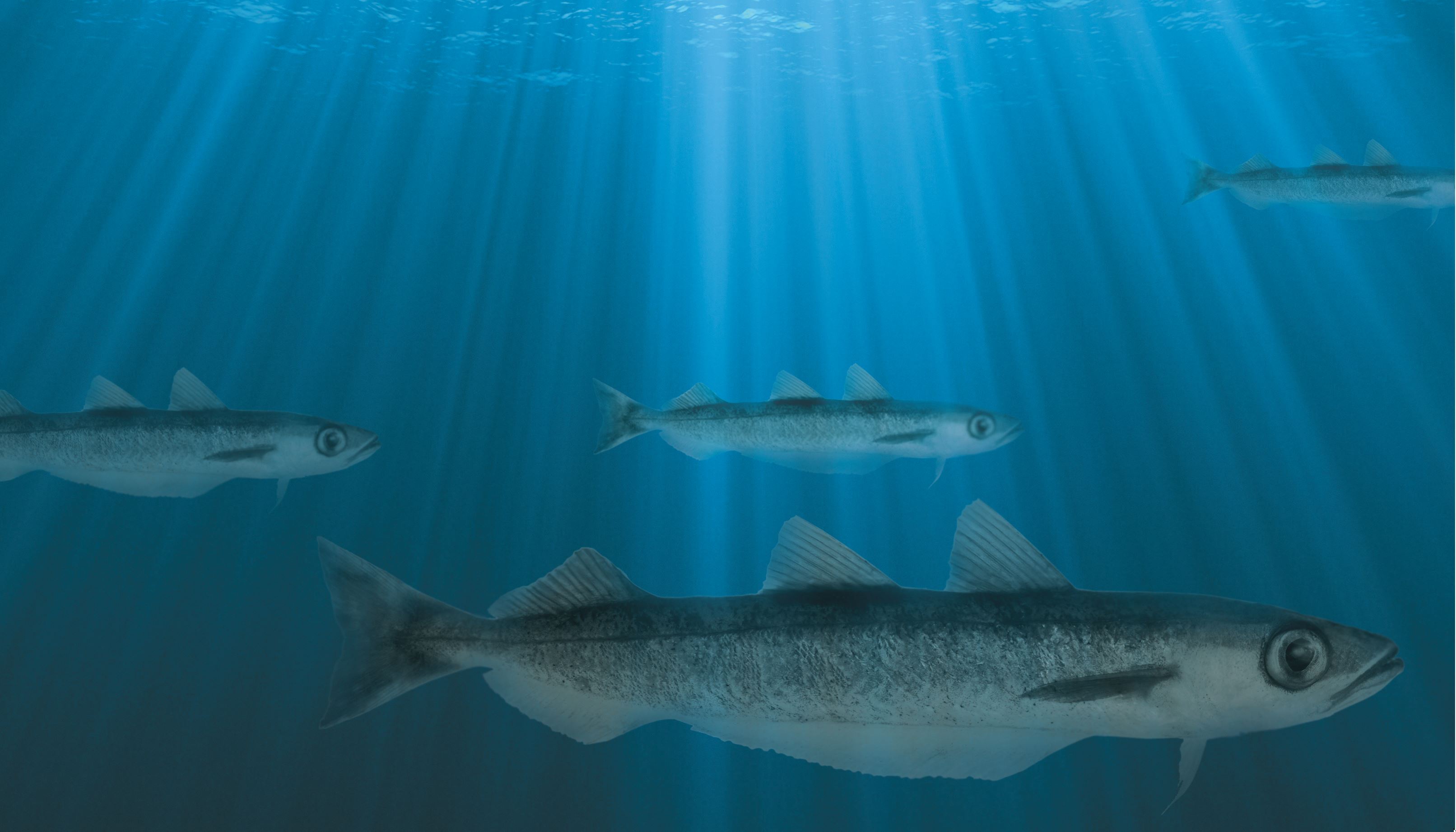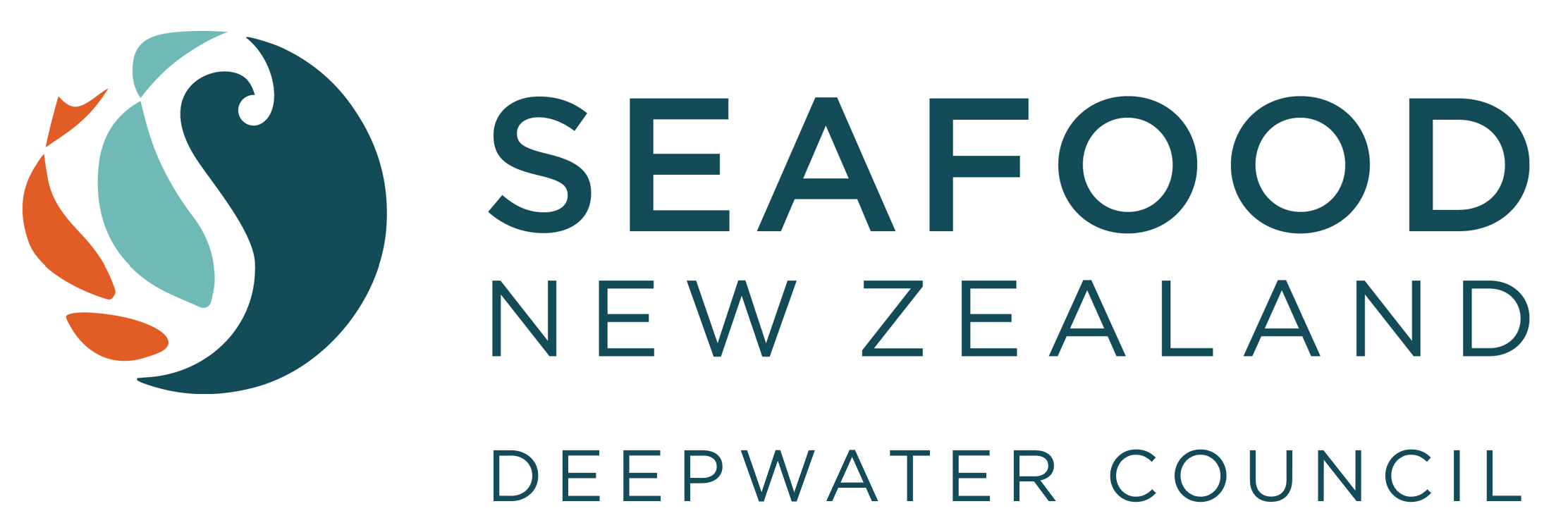
Southern blue whiting
trawl fishery
surveillance audit 2022
The SBW 6B and SBW 6I trawl fisheries have been MSC certified since 2012. They passed their third surveillance audit in June 2022 and will be undergoing a re-assessment in 2023.
To view Lloyd's Register's Surveillance Report August 2022 [click here].
DWG undertakes to make all non-confidential information that is provided to the Conformance Assessment Body publicly available on this webpage to ensure all documents are easily accessible by all participants.
A summary of the key information from these references can be found in the Situation Report [click here].
MSC sets the highest independent science-based international seafood sustainability standards, covering three broad principles:
Principle 1 - SUSTAINABLE FISH STOCKS
"A fishery must be conducted in a manner that does not lead to over-fishing or depletion of the exploited populations and, for those populations that are depleted, the fishery must be conducted in a manner that demonstrably leads to their recovery."
The intent of this principle is to ensure that the productive capacities of the resources are maintained at high levels and are not sacrificed in favour of short-term interests.
Key P1 References
Doonan, I.J. (2017). Evaluation of a simple harvest control rule for the Bounty southern blue whiting management area (SBW6B). New Zealand Fisheries Assessment Report 2017/52. 14 p. [click here]
Doonan, I. J. (2018). Objective 2: To apply the agreed harvest control rule to SBW6B, 2018. Final Research Report, unpublished manuscript held by FNZ. 2 p. [click here]
Doonan, I. (2020). Southern blue whiting (Micromesistius australis) stock assessment for the Campbell Island Rise for data up to 2018-19. New Zealand Fisheries Assessment Report 2020/43. 20 p. [click here]
Doonan, I. and A’mar, T. Bounty Plateau SBW harvest control rule (HCR). Presentation to Deep Water Working Group, February 2022. 14 p. Unpublished report currently unavailable for distribution.
FNZ (2022) Fisheries Assessment Plenary May 2022. Stock Assessments and Stock Status Vol. 3: Red Gurnard to Yellow-eyed Mullet. Southern blue whiting pp.1621-1650. [click here]
FNZ (2022a). Review of Sustainability Measures for the 2022 April round. Fisheries New Zealand Decision Paper. Southern Blue Whiting (SBW 6B). pp. 12-23. [click here]
FNZ (2022b). Minister’s Decision Letter. Changes to fisheries sustainability measures for 1 April 2022. [click here]
Ladroit,Y., O’Driscoll, R.L. and Large, K. (2020). Acoustic estimates of southern blue whiting from the Campbell Island Rise, August-September 2019 (TAN1905). New Zealand Fisheries Assessment Report 2020/26. 56 p. [click here]
Large, K., O’Driscoll, R.L. and Datta, S. (2021). Review and summary of the time series of input data available for the assessment of southern blue whiting (Micromesistius australis) stocks up to and including the 2020 season. New Zealand Fisheries Assessment Report 2021/40. 73 p. [click here]
O’Driscoll, R.L. (2018). Acoustic biomass estimates of southern blue whiting on the Bounty Plateau in 2017. New Zealand Fisheries Assessment Report 2018/11. 28 p. [click here]
Principle 2 - MINIMAL IMPACTS ON THE ENVIRONMENT
"Fishing operations should allow for the maintenance of the structure, productivity, function and diversity of the ecosystem (including habitat and associated dependent and ecologically related species) on which the fishery depends."
The intent of this principle is to encourage the management of fisheries from an ecosystem perspective under a system designed to restrain the impacts of the fishery on the ecosystem.
Key P2 References
Baker, C.S., Boren, L., Childerhouse, S., Constantine, R., van Helden, A., Lundquist, D., Rayment W. & Rolfe, J.R. (2019). Conservation status of New Zealand marine mammals, 2019. New Zealand Threat Classification Series 29. 18 p. [click here]
Baird, S.J. and Mules, R. (2021). Extent of bottom contact by commercial trawling and dredging in New Zealand waters, 1989–90 to 2018–19. Draft New Zealand Aquatic Environment and Biodiversity Report No. 260. 161 p. [click here]
Bell, E.A. 2013 [updated 2018]. Grey petrel. In Miskelly, C.M. (ed.) New Zealand Birds Online. [click here]
Cleal, J. (2021). Deepwater Group Environmental Liaison Officer (ELO) Report for the 2020-21 Fishing Year. 7 p. [click here]
DOC (2017). New Zealand sea lion/rāpoka Threat Management Plan 2017 – 2022. 17 p. [click here]
DOC (2019). Conservation Services Programme Annual Plan 2019/20. DOC: Wellington. 86 p. [click here]
DOC (2021). Conservation Services Programme Annual Plan 2021/22. DOC: Wellington. 68 p. [click here]
DWG (2019). Notice for Vessels and Skippers: Sea Lion Risk Management Actions SBW 6I – Campbell Island (2019). Deepwater Group Ltd. 1 p. [click here]
DWG (2020). Notice for Vessels and Skippers: Sea Lion Risk Management Actions SBW 6I – Campbell Island (2020). Deepwater Group Ltd. 1 p. [click here]
DWG (2021). Notice for Vessels and Skippers: Sea Lion Risk Management Actions SBW 6I – Campbell Island (2021). Deepwater Group Ltd. 1 p [click here]
DWG (2022). Operational Procedures. [click here]
Finucci, B., Stephenson, F., Petersen, G., Francis, M. and Pinkerton, M. (2020). Exploring the drivers of spatial distributions of basking sharks in New Zealand waters. POP2020-03 final report for the Conservation Services Programme, Department of Conservation. Prepared by the National Institute of Water and Atmospheric Research (NIWA), 50 p. [click here]
Finucci, B., Edwards, C.T.T., Anderson, O.F. & Ballara, S.L. (2019). Fish and invertebrate bycatch in New Zealand deepwater fisheries from 1990-91 until 2016-17. New Zealand Aquatic Environment and Biodiversity Report No. 210. 77 p. [click here]
FNZ (2019). National Fisheries Plan for Deepwater and Middle-depth Fisheries 2019. Fisheries New Zealand Technical Paper No: 2019/03. 34 p. [click here]
FNZ (2020). National Plan of Action – Seabirds 2020. Reducing the incidental mortality of seabirds in fisheries. 21 p. [click here]
FNZ (2020a). National Plan of Action – Seabirds 2020. Implementation Plan. 13 p. [click here]
FNZ (2020b). National Plan of Action – Seabirds 2020. Supporting Document. 49 p. [click here]
FNZ (2020c). National Plan of Action – Seabirds 2020. 2018/19 Report. Fisheries New Zealand Information Paper No: 2020/08. 67 p. [click here]
FNZ (2021). 2021 Operational Plan to Manage the Incidental Capture of New Zealand Sea Lions in the Southern Blue Whiting Fishery, Campbell Island (SBW6I). v1.1. Fisheries New Zealand. 8 p. [click here]
FNZ (2021a). Annual Operational Plan for Deepwater Fisheries 2021/22. Fisheries New Zealand Technical Paper No: 2021/04. [click here]
FNZ (2021b). Protected species bycatch 2002-03 to 2019-20. [click here]
FNZ (2022) Fisheries Assessment Plenary May 2022. Stock Assessments and Stock Status Vol. 3: Red Gurnard to Yellow-eyed Mullet. Southern blue whiting pp.1621-1650. [click here]
FNZ (2022a). Performance of the Southern Blue Whiting Fishery at Campbell Plateau (SBW 6I) and Compliance with the 2021 Operational Plan. Report prepared by Deep Water Management team, Fisheries New Zealand, 3 p. [click here]
FNZ (2022b). Aquatic Environment and Biodiversity Annual Review 2021. Compiled by the Aquatic Environment Team, Fisheries Science and Information, Fisheries New Zealand, Wellington New Zealand. 779 p. [click here]
Helson, J., Leslie, S., Clement, G., Wells, R. and Wood, R. (2010). Private rights, public benefits: Industry-driven seabed protection. Marine Policy 34, 557–566. [click here]
Rexer-Huber K., Parker G.C. 2020. Bounty Islands drone trials: feasibility for population assessment of NZ fur seal. Final report to the Conservation Services Programme, Department of Conservation. Parker Conservation, Dunedin. 18 p. [click here]
Young, M. and Manno, K. (2022). Auckland Islands 2021/22 New Zealand Sea Lion /pakake/whakahao field research report. Conservation Services Programme pup count. Prepared for the Department of Conservation (DOC). 34 p. [click here]
Principle 3 - EFFECTIVE FISHERIES MANAGEMENT
"The fishery is subject to an effective management system that respects local, national and international laws and standards and incorporates institutional and operational frameworks that require the use of the resource to be responsible and sustainable."
The intent of this principle is to ensure that there is an institutional and operational framework for implementing Principles 1 and 2, appropriate to the size and scale of the fishery.
Key P3 References
DWG (2019). FNZ-Deepwater Operator’s Meeting Summary and Action Points Dec19. 2 p. [click here]
DWG (2020). FNZ-Deepwater Operator’s Meeting Agenda Jun20. 1 p. [click here]
DWG (2021). Operational Procedures. [click here]
FNZ (2019). National Fisheries Plan for Deepwater and Middle-depth Fisheries 2019. Fisheries New Zealand Technical Paper No: 2019/03. 34 p. [click here]
FNZ (2019a). Protected Fish Species Reporting Requirements for Non-Fish/Protected Species. Fisheries Management Fact Sheet 5. 3 p. [click here]
FNZ (2020). National Plan of Action – Seabirds 2020. Reducing the incidental mortality of seabirds in fisheries. 21 p. [click here]
FNZ (2020a). Medium Term Research Plan for Deepwater Fisheries 2020/21 – 2024/25. Fisheries New Zealand Information Paper No: 2020/01. 21 p. [click here]
FNZ (2020b). National Plan of Action – Seabirds 2020. Implementation Plan v2. 14 p. [click here]
FNZ (2021). Annual Operational Plan for Deepwater Fisheries 2021/22. Fisheries New Zealand Technical Paper No: 2021/04. [click here]
FNZ (2021a). Annual Review Report for Deepwater Fisheries 2019/20. Fisheries New Zealand Technical Paper No: 2021/02. [click here]
FNZ (2022). Aquatic Environment and Biodiversity Annual Review 2021. Compiled by the Aquatic Environment Team, Fisheries Science and Information, Fisheries New Zealand, Wellington New Zealand. 779 p. [click here]
Helson, J., Leslie, S., Clement, G., Wells, R. and Wood, R. (2010). Private rights, public benefits: Industry-driven seabed protection. Marine Policy 34, 557–566. [click here]
IQANZ (2018). Deepwater Fisheries Management Independent Quality Assurance Review Report. Prepared for Ministry for Primary Industries by Independent Quality Assurance New Zealand (IQANZ). 13 p. [click here]
MFish (2011). Research and Science Information Standard for New Zealand Fisheries. Ministry of Fisheries, April 2011. 31 p. [click here]
MPI (2008). Harvest Strategy Standard for New Zealand Fisheries. Ministry for Primary Industries. 25 p. [click here]
MPI (2010). Memorandum of Understanding: Continuing a partnership between the Ministry of Fisheries and the deepwater fishing industry for the management of New Zealand’s deepwater fisheries. 12 p. [click here]
MPI (2011). Southern Blue Whiting: National Deepwater Fisheries Plan. 50 p. [click here]
MPI (2013). National Plan of Action for the Conservation and Management of Sharks. 32 p. [click here]
MPI (2019). Fisheries Compliance: DW Operators Meeting – Nelson 5th March 2019. PowerPoint presentation prepared by Ministry for Primary Industries. [click here]
MPI (2020). Risk Management and Compliance HOK and SBW. Ministry for Primary Industries memo to deepwater operators, June 2020. 2 p. [click here]
Surveillance Report
Lloyd's Register's Surveillance Report August 2022 [click here].
